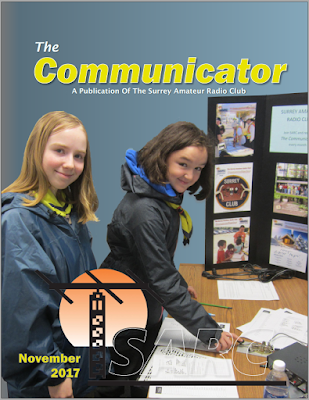Here is the latest Communicator. In this edition you will find:
- The Rest Of The Story—Lee De Forest
- What’s Happening This Month In Ham?
- News You Can Lose
- Back To Basics
- Club News—SARC
- Radio-Active
- Club News—SEPAR Report
- Emergency Comms—NVIS Antennas
- JOTA—Scouts On The Air
- Club News—North Shore ARC
- Club News—Richmond ARC
- Tech Topics—Hamstick Dipole Follow-up
- SARC Course Update
- and more...
 |
| Two Enthusiastic JOTA Participants |
You can read or download this edition here
My deadline for the December edition is November 20th. If you have news from your Vancouver area club, events or other items of interest please email them to me at communicator@ve7sar.net




















